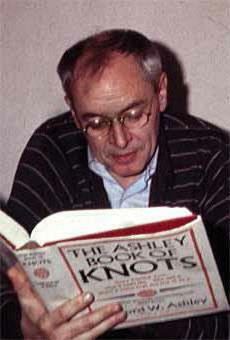Ronald Laing, British psychiatrist: biography, education, achievements
Ronald David Laing was a Scottish psychiatrist who wrote a lot about mental illnesses like psychosis.
The doctor believed that the true basis of insanity lies in the foundation of human existence. He treated many mental disorders as a method and means of survival of individuals in the present world. He suggested that you can regard madness as a sound response to a crazy social environment. Also, Laing claimed that the newest psychiatry represents in a false light the true inner world of the mentally ill. He defended the rights of patients.
He is often associated with the movement against psychiatry, although, like many of his contemporaries, he also criticizes it, he himself denies this stereotype. He made a significant contribution to the ethics of psychology.
Biography
The British psychiatrist was born in Govanhill( Glasgow region) on October 7, 1927.Father was a designer in various buildings, then an electrical engineer in the city of Glasgow. As Laing claimed, in early years and in his youth, he experienced the deepest experiences, the cause of which he considered his own overly cold-blooded and indifferent mother.
Education
He was educated at the gymnasium, continued to study medicine at the University of Glasgow, did not pass the exams at the first attempt, but later retook and successfully graduated in 951.
career Ronald Laing spent a couple of years as a psychiatrist in the British Army, where he discovered that he had a special talent for communicating with unbalanced people. In 1953, he left the army and worked at the Royal Hospital of Gartnavel, Glasgow. During this period, Ronald Laing also participated in an existential-oriented discussion group at the University of Glasgow, organized by Karl Abenheimer and Joe Shorshtayn.

In 1956, at the invitation of John( "Jock") D. Sutherland, he went on an internship for a grant to the Tavistokku clinic in London, widely known as a center for the study and practice of psychotherapy( especially psychoanalysis).
At this time he was associated with John Bowlby, D.V.Vinnicott and Charles Rijkroft. Laing remained at the Tavistock Institute until 1964.In 1965, he and a group of colleagues created the Philadelphia Association. They started a project of a psychiatric community in Kingsley Hall, where patients and therapists lived together.

Norwegian Author Axel Jensen met Ronald Laing during this period. They became close friends, and Laing often visited the writer on his ship "Shanti Devi" in Stockholm.
He began to develop a team offering repeated seminars in which one designated person decides to try the fight again, trying to break out of the birth canal in the face of the rest of the group that surround him / her.
The personal life of
The biography of Ronald Laing can be seen as a prime example of how each generation of the family has consequences for the next. His parents led the life of extreme negation, showing strange behavior. His father David, an electrical engineer, often fought his own brother, and had a nervous breakdown when Laing was a teenager. His mother Amelia was described as "even more psychologically peculiar".According to one friend and neighbor, "everyone on the street knew that she was crazy."
Ronald Laing was concerned about his personal problems, suffered from episodic alcoholism and clinical depression - by his self-diagnosis in 1983 in an interview for BBC Radio with Dr. Anthony Clare. Although he was supposedly free in the years that preceded his death. He died at the age of 61 from a heart attack, playing tennis with his colleague and good friend Robert W. Firestone.

Adam, his eldest son from a second marriage, was found dead in a tent on an island in the Mediterranean in 2008, after what could have been a "suicidal binge" as a result of a break in a long-term relationship with girlfriend Janina. He died of a heart attack at the age of 41.
Theodore Itten, a former student of R.D.Layinga, who later became a close friend of the family, said that the breakup of his parents' marriage - the mother of Adam Jutta broke up with Lange in 1981 - all this had a profound effect on him. When he was 13, 14, 15 he was a rebel, dropped out of school. Theodore said: "I think it was a very sad time for Adam, he tried to calm himself with cigarettes, sometimes drugs and alcohol, as a kind of self-help."
Susan, his daughter, died in March 1976 at the age of 21 from leukemia. A year later, his eldest daughter Fiona suffered a nervous breakdown. In an interview she said about her father: "He can solve other people's problems, but not our own."
Leing's view on mental illness
He argued that strange behavior and seemingly confusion of speech of people experiencing a psychological disorder should ultimately be regarded as an attempt to report concerns and concerns, often in situations where it is impossible or forbidden.

Ronald Laing stated that people can often be put in impossible situations when they are not able to meet the conflicting expectations of their peers, which leads to a complex mental disorder for the individuals concerned.

The alleged symptoms of schizophrenia were an expression of this suffering and should be evaluated as a catharsis and transformative experience. This is a reassessment of the focus of the painful process, and, consequently, a shift in the forms of treatment that has been, and generally still is( perhaps now more than ever).In the broadest sense, we have in ourselves both psychological subjects and a pathological entity.
Psychiatrist and philosopher Karl Jaspers previously stated in his fruitful work "General Psychopathology" that many symptoms of mental illness( and especially delirium) are incomprehensible, so they deserve little attention, except for the signs of some other major disorders.
Laing was a revolutionary in assessing the content of psychotic behavior and speech as a real expression of suffering, albeit wrapped in a mysterious language of personal symbolism that only makes sense in their situation.

According to him, if the therapist can better understand his patient, then he can begin to understand the symbolism of his psychosis, and, therefore, begin to solve the problems that are the root cause of the disaster.
Ronald never said that a mental illness does not exist, but simply viewed it in a radically different light from contemporaries.
For Laying, a mental illness can be a transformative episode when the process of transferring a mental disorder is compared to a shamanic journey. A traveler can return from a journey with important ideas, and perhaps even become a wiser and more grounded person as a result.
Achievements of
Laing's most famous and almost useful achievement in psychiatry is his co-sponsorship and presidency in 1965 in the Philadelphia Association and the wider promotion of therapeutic communities adopted in more effective and less confrontational psychiatric institutions.

Other organizations created in its tradition are the Altanka Association and the New School of Psychotherapy and Counseling in London "Existential Psychotherapy".
Proceedings of
Among his works appear: "The Shattered I", "Me and Others", "Common Sense, Madness and Family" and many others.
In the "Split Self", Laing contrasted the "ontologically safe person" with another who "can not accept reality, vitality, autonomy, his identity and others for granted" and therefore devises strategies to avoid "losing himself."
Symbolism
He explains that we all exist in the world as beings defined by others who carry the model of us in their heads, just as we carry their models in our consciousness. In later works, he often takes it on deeper levels, painstakingly prescribing as "A knows that B knows that A knows what B knows. .."!
In "Me and Others"( 1961), Laing's definition of normality has shifted somewhat.
In his book "Sanity, madness and family"( 1964), Laing and Esterton talk about several families, analyzing how their members see each other and how they actually communicate with each other.
